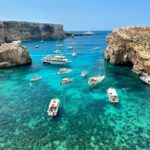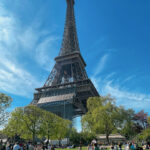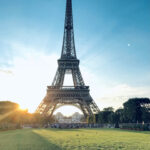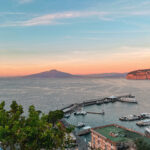
Morocco is rich in cultural and religious tradition and attracts visitors from around the world who explore its sandy deserts, historic cities, vibrant souks, and mountain ranges. It is the perfect destination for the ultimate unique North African experience!
Morocco 10 Day Itinerary
Visit the country’s best cities and experience its lively culture in this 10 day itinerary. You’ll fly into Tangier Ibn Battuta Airport, explore the blue city of Chefchaouen, Morocco’s second oldest city of Fes, ride camels through the Sahara Desert, and finish in the red city of Marrakesh.
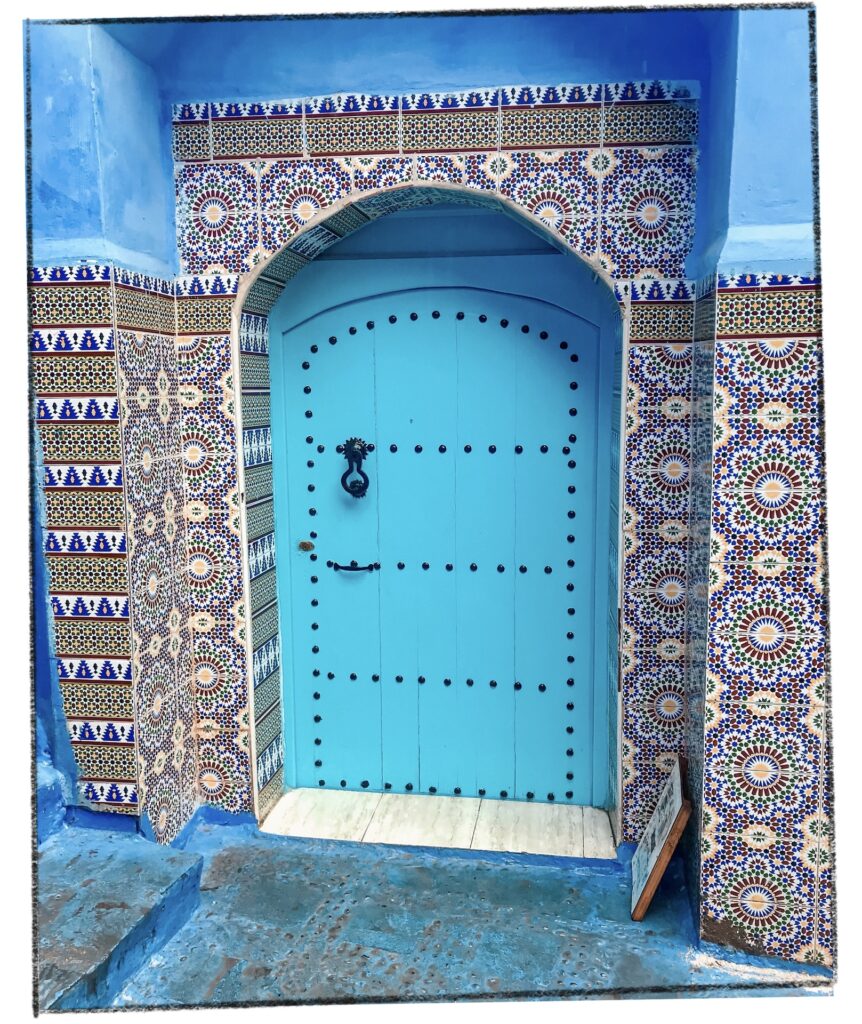
Day 1-2: Chefchaouen (2 nights)
Day 3-4: Fes (2 nights)
Day 5-6: Sahara Desert (2 nights)
Day 7: Dades Valley (1 night)
Day 8-9: Marrakesh (2 nights)
Day 10: Depart Marrakesh
It’s easy to arrange your own itinerary, but I highly suggest booking with a travel company for convenience. Many of the main attractions are hours apart from each other, and a comprehensive trip to Morocco will involve many hours on the road. I had an amazing experience with Morocco Sahara Holiday. They helped map out our entire itinerary and provided transportation, accommodations, and personal guides in specific cities.

Before you continue, here are a few Arabic words to familiarize yourself with:
Riad: Simply put, it’s a traditional Moroccan house that has been converted into guest rooms. These are incredible places to stay because they provide a genuine Moroccan living experience and are much more personal, containing only about 5-10 rooms.
Mellah: the Jewish quarter of some cities which are often surrounded by a wall with a fortified gateway.
Medina: the old part of a town or city. It is typically walled off and contains narrow streets, fountains, palaces and mosques.
Kasbah: a fortified residence often constructed of mud or clay.
Ksar: multiple kasbah!

Day 1-2: Chefchaouen

Chefchaouen is a small, serene city built into the Rif Mountains of Northwest Morocco. It’s famously known as the “Blue Pearl,” or colloquially, “Chaouen,” for its blue painted walls, streets, and doors. Unlike other popular Moroccan cities such as Marrakesch and Fes, Chefchaouen has a much more peaceful vibe.
Its definitely far from most of Morocco’s main attractions, but it is worth the trip here. Many tourists find Chefchaouen to be one of their favorite places in Morocco and I would totally agree. Each corner of the city is a dream. The city is compact and walkable with occasional steep hills. You’ll only need one full day to explore, which makes it easy to check off your list. Most of your time will be spent admiring and appreciating the maze-like city. It’s a photographer’s heaven!



Helpful Tip: Shopping can be a much better experience than in larger cities as storeowners are less aggressive. But, you will find things to be a bit more expensive here.
HOTELS: Riad Hicham, Auberge Dardara, Dar Baibou
Day 3-4: Fes
Fes is the second largest city in Morocco, with an estimated 1.5 million residents and about 9,500 winding streets throughout the old medina. The city itself is a UNESCO World Heritage site and one of the most well-preserved old Arab cities. It is the planet’s largest car-free urban area!
There are two parts of Fes. The first is Fes El-Bali or, “Old Fes.” Just beyond the Blue Gate of Fes El-Bali is Fel El Jdid, or “New Fes.” New Fes is a few hundred years old as opposed to thousands of years old.

Helpful Tip: The city of Fes, particularly Old Fes, is extremely difficult to navigate so I HIGHLY recommend hiring a guide for this part of your trip. Even with directions, one lost turn and you could find yourself completely disoriented. I also didn’t feel very safe walking around at night, so we called it an early night and ate dinner at the riad.
Be sure to shop around the souks, visit the royal palace gate, and explore the Jewish headquarter which was the first mellah ever built in Morocco during the 16th century.

An absolute must is to tour the tanneries where handcrafted leather items are produced and sold. The tours are fascinating, but one downside is that they can be quite smelly! You’ll likely be offered some type of herb to hold under your nose to ease the powerful aromas.
Moroccans pride themselves on their creative and distinct carpets. You’ll have plenty of opportunities to visit some of the warehouses and haggle down prices if you wish to buy and ship back your very own Moroccan rug.


HOTELS: Riad Letchina, La Maison Bleue Batha, Riad Fes – Relais & Châteaux, Dar Seffarine
Meknes
On your drive to Fes, consider a quick detour to the historic city of Meknes, which was once the Moroccan capital city in the 17th century. Place el Hedim is the main square that hosts large gatherings and markets. It also contains the famous Bab el-Mansour.
Bab el-Mansour is one of Morocco’s most elaborate gates with soaring arches and intricate mosaic tiles. It was originally the ceremonial entrance to the Kasbah of Sultan Moulay Isma’il, which leads into the former imperial city. Make your way through the gates to the the mausoleum of Sultan Moulay Isma’il which is beautifully designed with courtyards and fountains.
Day 5-6: Sahara Desert (Merzouga)
Unfortunately a tough seven hour drive from Fes, but if you followed my advice you’ll be napping in the backseat and your driver will handle the rest 🙂
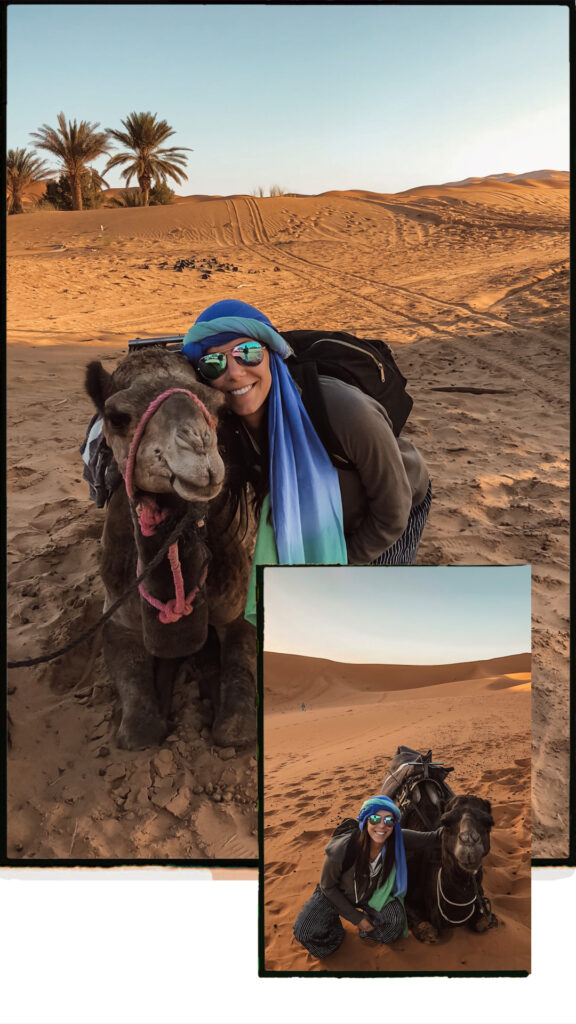

Near the city of Merzouga lies the Erg Chebbi desert, a small part of the Sahara Desert. Most visitors who visit Erg Chebbi stay in Merzouga as a base for camel treks into the desert.
Erg Chebbi is only a short camel ride through high sand dunes. In Erg Chebbi you will find many different campsites with running water and electricity…IMO the perfect kind of glamping. At campsites, you will have the opportunity to climb these giant sand dunes and sandboard. Most tours end the night with an intimate dinner under the stars some live music.

HOTELS: Ksar Merzouga, Riad Chebbi
Day 7: Dades Valley
The journey to Marrakesh is quite long from Merzouga, so I would suggest breaking it up and spending a night in Dades Valley. Make sure to stop and explore the Todgha Gorges which are a series of limestone river canyons. Both the Todgha and neighbouring Dades Rivers are responsible for carving out these deep cliff-sided canyons, on their final 40 kilometres through the mountains. There is a wonderful area where you can walk through the gorge and admire its beauty.


HOTELS: Auberge Panorama, Riad Gabsi Du Dades
Day 8-9: Marrakech
On the final journey to Marrakech you’ll pass through “the road of the 1,000 kasbahs” which is actually what you’ll see. On this road you’ll find numerous opportunities to take some of your best photos in the country.
In the southern slopes of the High Atlas mountains, you will find the site of Aït Ben Haddou. This ksar is the most famous ksar in the Ounila Valley surrounded by crops, palm trees and fruit trees. It became a UNESCO World Heritage Site in 1987, but gained its popularity through films shot here such as The Mummy and Gladiator.

Marrakech is actually the fourth largest city in Morocco and has quickly become the most popular amongst travelers. It is known as the “Red City” because of its red sandstone walls built in the 1100s. This bustling and chaotic city offers visitors the opportunity to relax and pamper themselves at some of their beautiful riads or explore the winding maze-like streets around the medina.
The oldest parts of Marrakech date back to when the city was founded in 1062. Like Fes, it has two main areas, the Medina (old town) and Gueliz (new town). In the medina you will find the famous town square, Jemaa el-Fna, with all the souks. Whereas the new town is modern and gives off a completely different vibe.



In the souks, you’ll find hundreds of handicrafts including lamps, carpets, jewelry, leather, and a wide array of spices. Storeowners tend to be a bit aggressive and inflate their prices to tourists, so make sure to bargain! And when you are invited to a mint tea, it is clear what follows: they want to sell you something.
Some of the other top highlights of the city include: YSL museum and Jardin Majorelle, Koutoubia Mosque: the largest mosque in Marrakesh, and Bahia Palace.
HOTELS: Les Borjs De La Kasbah, Le Riad Berbère, Riad Yasmine, La Sultana Marrakech
Day 10: Depart Marrakech


